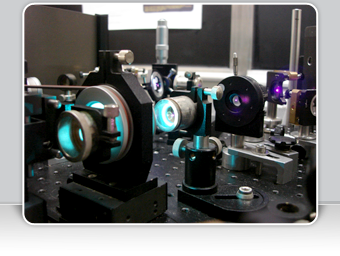« Back to all publications
Download this list in a RIS file or a BIB file or a PDF file
|
||||||||
The rate constants of back-electron-transfer (BET) reaction within geminate ion pairs generated upon static ET quenching of cyano-substituted anthracenes by aromatic amines and methoxy-substituted benzenes (MSB) at high concentration in acetonitrile have been measured directly using ultrafast multiplex transient grating spectroscopy. The free energy of BET, ΔGBET, was varied between −3.0 and −0.6 eV, a range corresponding, in principle, to the inverted, barrierless, and normal regimes. When plotted vs ΔGBET, the measured rate constants, kBET, exhibit a large scattering. Good fits of the semiclassical expression for nonadiabatic ET are obtained if the rate constants are sorted according to the electron donor. The resulting electronic coupling matrix elements V are larger and the solvent reorganization energies smaller than those reported for BET within solvent-separated ion pairs, suggesting that BET takes place between ions in contact. However, in the low exergonicity region, the observed BET rate constants are slower than those reported for contact ion pairs formed by charge-transfer excitation. The dynamics of BET within radical pairs generated upon ET quenching of the N-methylacridinium cation has also been investigated, and the role of the electrostatic interaction within geminate ion pairs is discussed. | ||||||||
|
||||||||
An investigation of the charge recombination (CR) dynamics of geminate ion pairs formed upon electron transfer quenching of azulene, benz[a]azulene, and xanthione in the second singlet excited state by several electron donors, using ultrafast time resolved spectroscopy and photoconductivity is reported. The ion pairs have two possible CR pathways: (i) a highly exergonic CR to the neutral ground state or (ii) a moderately exergonic CR leading to the formation of the neutral acceptor in the first singlet excited state. This investigation shows strong evidence of the predominance of the second pathway. CR in ion pairs formed with the azulenes is faster by a factor of more than 50 than in ion pairs having a similar energy but with the first CR pathway only. The electron transfer quenching of xanthione in the second singlet excited state by several weak donors does not lead to a significant reduction of the triplet yield of this molecule. The relevance of these results to explain the absence of the inverted region in highly exergonic bimolecular charge separation reactions is discussed. | ||||||||
|
||||||||
The excited-state dynamics of the radical cations of perylene (PE•+), tetracene (TE•+), and thianthrene (TH•+), as well as the radical anions of anthraquinone (AQ•-) and tetracenequinone (TQ•-), formed by γ irradiation in low-temperature matrices (PE•+, TH•+, AQ•-, and TQ•-) or by oxidation in sulfuric acid (PE•+, TE•+, and TH•+) have been investigated using ultrafast pump−probe spectroscopy. The longest ground-state recovery time measured was 100 ps. The excited-state lifetime of PE•+ is substantially longer in low-temperature matrices than in H2SO4, where the effects of perdeuteration and of temperature on the ground-state recovery dynamics indicate that internal conversion is not the major decay channel of PE•+*. The data suggest that both PE•+* and TE•+* decay mainly through an intermolecular quenching process, most probably a reversible charge transfer reaction. Contrarily to AQ•-*, TQ•-* exhibits an emission in the visible which, according to theoretical calculations, occurs from an upper excited state. | ||||||||
Download this list in a RIS file or a BIB file or a PDF file
Contact:
Eric Vauthey
Physical Chemistry Department - Sciences II - University of Geneva
30, Quai Ernest Ansermet - CH-1211 Geneva 4 (Switzerland)
© All rights reserved by Eric Vauthey and the University of Geneva
Design and code by Guillaume Duvanel




